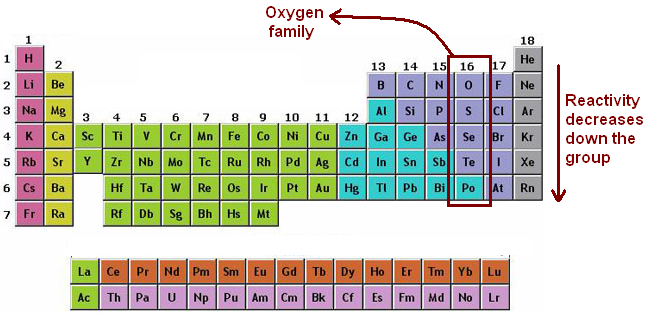
Looks like no one added any tags here yet for you.
Period
The horizontal rows in the periodic table. Atoms in the same period have the same number of shells
Group
The vertical columns in the periodic table. Atoms in the same group have the same number of valence electrons.
Valance electrons:
The electrons located at the outermost shell of an atom
How to find number of protons in an atom
Atomic number
How to find number of electrons in an atom
Atomic number
How to find number of neutrons in an atom
Atomic weight - number of protons
Ions
An atom that has a positive or negative charge as a result of gaining or losing electrons.
Cations
Positive ions. Formed with atoms in the groups 1,2,3,4. (e.g sodium)
Anions
Negative ions. Formed with atoms in the groups 5,6,7,8. (e.g fluorine)
What will react easily
Elements that can give each other full shells (e.g sodium and fluorine)
Metal properties
Good conductors of heat and electricity, Shiny, ductile, malleable, reaction with water = corrosion, Mostly solids
Non metals
Poor conductors of heat and electricity, Dull, not ductile, Brittle, Mix of solids, liquids and gases
Metalloids
Mix of metals and non metals
Alkali metals properties
soft and silvery, very reactive (especially with water) and always bonded with other elements in nature
Alkaline earth metals
white and malleable, reactive (but not as much as alkali metals), very good conductors of electricity and always bonded with other elements in nature
transition metals
Good conductors of heat and electricity, Able to put 32 electrons in their second last shell, Have 1 or 2 valence electron, Combine chemically with oxygen
boron family
majority are metals except boron which is a metaloid. Stable and fairly unreactive
carbon family
Metals, metaloids and non metals. Stable and fairly unreactive
Nitrogen family
Metals, metaloids and non metals. Can share electrons to form compounds
Oxegen family

Contains metals, metaloids, non metals. Highly reactive
Halogens
non-metals and very reactive. They mostly react with alkali metals to form salts
nobel gasses
Non-reactive gasses that are found in earth’s atmosphere.
rare earth metals
Some are radioactive. Silver, silvery white and grey.
Isotopes
Different versions of an element as they have different amounts of neutrons. They are named after their mass number.
Radioisotopes
Isotopes that are unstable. The ratio of protons to neutrons is unbalanced and the nuclease will decay by emitting the three types of radiation, alpha, beta and gamma
Alpha radiation
This type of radiation is when an atom emits a helium nuclease. It is positive, with an atomic mass of 4 AMU. Its radiation penetration is low (shielding of paper) but has the highest ionising ability. When an atom releases this type of radiation, the atomic mass goes down by 4 and the atomic number decreases by 2. As the atomic number goes down by 2, the is now different.
Beta radiation
This type of radiation is when an atom emits an electron. It is negative with an atomic mass of 1/2000 AMU. Its radiation penetration is intermediate (shielding of aluminium) with a medium ionising ability. When an atom releases this type of radiation, the atomic mass or number does not change.
Gamma radiation
This type of radiation is when an atom emits a high energy wave. It is neutral, with an atomic mass of 0 AMU. Its radiation penetration is very high (shielding of 2 inches of lead) but has a low ionising ability. When an atom releases this type of radiation, the atomic number and mass do not change. It often occurs with the other 2 kinds of radiation.
Penetration
How much each radiation is able to get through different materials
Ionising ability
Ability to add or lose/add electrons/protons by different amounts
Shielding
What material stops the radiation from getting through
Half life
Time taken for half the radioactive atom to decay